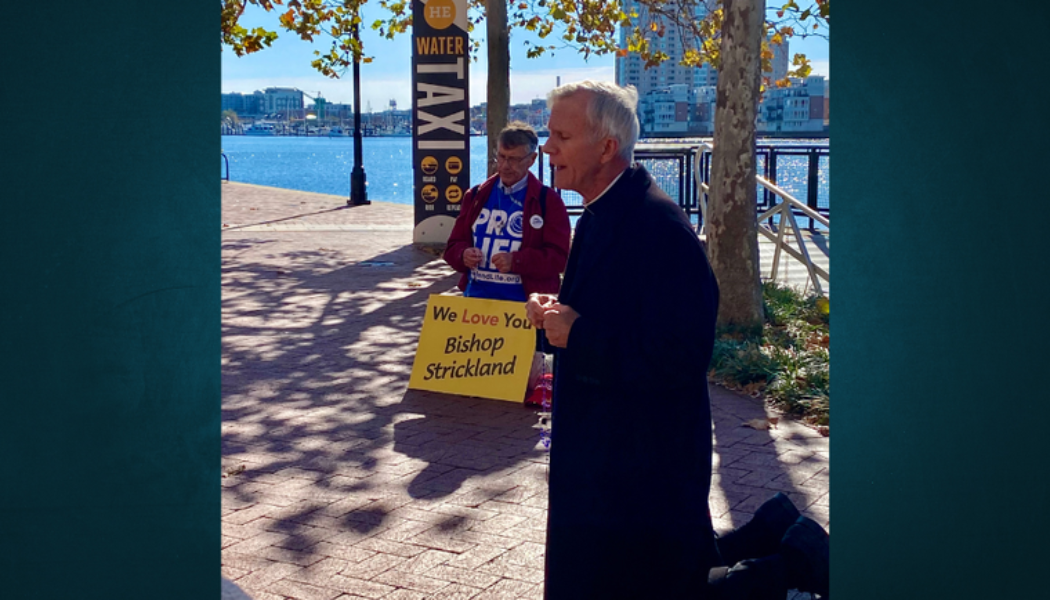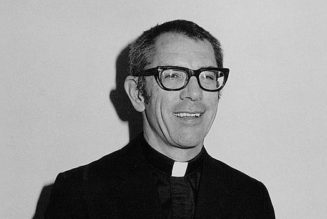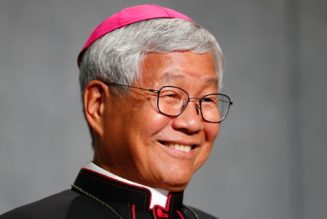
The removal of Bishop Joseph Strickland as bishop of Tyler, Texas, is a story for our time; it could not have been imagined even 10 years ago. It is a tale of partisanship threatening communion, social-media extremism and new rules for the removal of bishops.
The removal of a bishop from his diocese is a sad outcome, even if thought best for the common good of the local Church. In this case, the one person who may not be sad is Bishop Strickland himself. He seemed to desire precisely this outcome. It’s not just that he refused a papal request to resign — and was therefore relieved of office.
In recent months, Bishop Strickland became increasingly extreme in his attacks on the Holy Father, recently speaking at a conference in Rome where he sympathetically read an anonymous “letter from a friend” in which the very legitimacy of the “usurper” Pope Francis was questioned. A bishop who does that as frictions with Rome grow is not waiting to be shown the door, but opening it himself, asking for it to be slammed upon him. It is plausible that Bishop Strickland, now relieved of the pastoral care of Tyler, will be more free to travel and say whatever he wants about the Holy Father.
The Diocese of Twitter
With no offense to the faithful Catholics of Tyler, the diocese is ecclesiastically rather obscure. But Bishop Strickland was not only bishop of Tyler; he was titular bishop of Twitter, where he had more followers than Catholics in his small diocese.
The diocese of Twitter — and analogous internet dioceses — is a rather different thing. The imperative is not to build up the unity of an existing flock, but rather to attract a self-selected flock by sharpening divisions with others.
By all accounts, Bishop Strickland is a rather mild-mannered man. Yet after employing his crozier to bang out tweets, Bishop Strickland became increasingly shrill, no longer promoting communion rooted in the truths of the Catholic faith but styling himself a defender of truth in an aggressively partisan manner. I doubt the bishop of Tyler would ever write a pastoral letter calling the Holy Father a “diabolically disoriented clown,” but the bishop of Twitter did retweet, with approval, someone who did just that.
The bishop of Tyler would not judge it helpful to the holiness of his people to disparage the Holy Father and tear away at the bonds of communion with him. The bishop of Twitter finds it his preferred style of preaching.
Bishop Strickland has now been freed, should he wish to do so, to devote his energies to his adopted, self-selected, virtual flock. The digital world makes that an option now, and Bishop Strickland is not the only cleric who has chosen that path. And he is not the only one for whom it is has ended badly.
Rare, But Less So
Many news accounts of Bishop Strickland’s removal styled it as a “rare” move. That is true. If memory serves, St. John Paul II removed only one or two bishops in his long reign.
Pope Benedict removed four bishops during his pontificate, sometimes without publishing the reasons, as was the case in the removal of Bishop Strickland. The practice thus became less rare under Benedict XVI; namely, the removal of a bishop not for personal misconduct or commission of a canonical crime, but rather for poor governance, maladministration or some circumstance that made continuing in office “not feasible” — as Cardinal Daniel DiNardo of Galveston-Houston said about Bishop Strickland’s case.
Early in his pontificate (2014), Pope Francis updated Vatican norms clarifying that he could “ask a bishop to present his resignation from pastoral office, after having made known the reasons for the request and listening carefully to the reasons, in fraternal dialogue.”
Those “reasons” and “dialogue” do not have to be public. The usual instrument for that process is a confidential “apostolic visitation,” in which the pope sends other bishops to investigate the state of affairs in a particular diocese, usually by means of interviews and a review of documents. A visitation of Bishop Strickland’s diocese was held last June.
The 2014 norms made it clear that the Holy Father could invite a bishop to resign without imposing the canonical penalty of “privation” of office. Most often that request to resign is accepted by the bishop; other times, it is refused, and he is subsequently removed. The 2014 norms made more explicit what was already the case in practice, that the Holy Father has the authority to remove a bishop, even absent a canonical crime. Bishop Strickland himself acknowledged this. Several American bishops have been removed for reasons of poor management, rather than as a canonical penalty.
Bishop Robert Finn of Kansas City-St. Joseph, Missouri (2015), and Bishop Richard Stika of Knoxville, Tennessee (2023), were asked to resign, and did so. Bishop Martin Holley of Memphis, Tennessee (2018), and Bishop Daniel Fernández Torres of Arecibo, Puerto Rico (2022), were removed from office without offering their resignations, as in Bishop Strickland’s case. Another option was employed in the case of Bishop Jeffrey Montforton of Steubenville, Ohio, in September, when he was transferred to be an auxiliary bishop in Detroit, a most unusual demotion after he had lost the confidence of priests in his diocese.
While it was Bishop Strickland’s reckless social-media activity that attracted the attention of Rome, it may well be that it is maladministration of the diocese that led to his removal. At least one priest in Tyler, Father Tim Kelly, wrote of Bishop Strickland’s removal that “many decent good people have been hurt under his administration” when “something dark descended upon the Diocese of Tyler.”
What About?
A frequent reaction to the removal of Bishop Strickland was, “If Strickland is removed for X, why is Bishop Whomever not removed for Y?”
It’s the inevitable consequence of any removal from office or discipline in the Church, with accusations of a double standard at work. By itself the “what-about” reaction does not excuse the conduct of the man removed but may erode confidence in the one doing the removing. Pope Benedict and Pope Francis both faced the same criticism, though, given the new reality of digital media, the “what-about” voices are louder now.
What’s next for Bishop Strickland? That is up to him. Retired bishops — which he now is — have remarkable freedom of action. He was entitled to attend this week’s U.S. bishops’ conference meeting in Baltimore. Yet, instead of taking his place as the emeritus bishop of Tyler, one of hundreds of bishops inside, he preferred to pray the Rosary outside as the still-presiding bishop of Twitter. The latter office was not granted by Rome, and so cannot be taken away.








